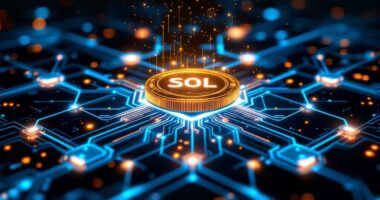Bitcoin mining requires specialized computers called ASICs that solve complex mathematical puzzles to validate transactions and earn cryptocurrency rewards. Miners typically join mining pools to increase their chances of regular payouts, similar to splitting lottery winnings. Essential components include mining software like CGMiner, reliable internet connectivity, and effective cooling systems. Profitability depends on factors like electricity costs and Bitcoin’s market price. Understanding the technical requirements and regulatory landscape will illuminate the path to successful mining operations.

Diving into the world of Bitcoin mining reveals a complex yet fascinating process that combines cutting-edge technology with financial opportunity. At its core, Bitcoin mining involves powerful computers solving intricate mathematical puzzles to validate transactions and add them to the blockchain, with miners receiving newly created bitcoins as rewards for their efforts. These miners play a crucial role in maintaining network security through their continuous validation work.
Gone are the days when anyone could mine Bitcoin with a regular computer. Today’s mining landscape demands specialized hardware called ASICs (Application-Specific Integrated Circuits), with popular models like the Antminer S19 Pro and Whatsminer M30S++ leading the pack. These machines, which look like high-tech toasters with an attitude, require robust cooling systems and reliable internet connections to function effectively. The evolution from CPUs to GPUs to FPGAs and ASICs revolutionized mining efficiency and computational power.
Miners typically choose between solo mining and pool mining, much like deciding between playing the lottery alone or joining an office pool – the latter offers more frequent but smaller payouts. Popular mining pools like Foundry USA, Antpool, and F2Pool charge small fees (1-3%) but provide consistent returns, while solo mining requires substantial computational power to be worthwhile. The critical component of mining success is achieving a high hash rate per second, which determines the speed of solving mathematical problems.
The software side of mining involves specialized programs such as CGMiner, BFGMiner, or EasyMiner, which run on standard operating systems like Windows, Linux, or macOS. These programs work alongside wallet software to store earned bitcoins and monitoring tools to track performance and profitability.
Profitability in Bitcoin mining hinges on several factors, including electricity costs (often the biggest expense), network difficulty (which adjusts every 2,016 blocks), and Bitcoin’s market price. The mining reward also halves approximately every four years, adding another layer of complexity to long-term planning.
The legal landscape for Bitcoin mining varies greatly worldwide, with some regions welcoming miners while others impose restrictions or outright bans. Environmental concerns about energy consumption have led to increased regulatory scrutiny, making it essential for potential miners to understand their local regulations and power infrastructure before diving in.
As with any technological venture, success in Bitcoin mining requires careful research, planning, and ongoing optimization.
Frequently Asked Questions
What Happens if My Mining Hardware Gets Damaged During the Mining Process?
When mining hardware gets damaged, immediate action is required to minimize losses. Common causes include overheating, power surges, and dust accumulation.
Miners should promptly shut down damaged equipment, document the issue, and check warranty status. While repairs or replacements can be costly and result in temporary revenue loss, it’s an opportunity to upgrade to more efficient hardware.
Regular maintenance and proper cooling systems help prevent future damage.
Can I Mine Bitcoins Using My Smartphone or Tablet?
While technically possible, mining Bitcoin on a smartphone or tablet is highly impractical.
Mobile devices lack the processing power of specialized mining equipment, making profitable mining virtually impossible. Additionally, the intense computational demands would likely damage the device through excessive heat and battery strain.
The time required to mine even a fraction of a Bitcoin would be astronomical, with energy costs far exceeding any potential rewards.
How Long Does It Take to Mine One Complete Bitcoin?
The time to mine one Bitcoin varies considerably based on several factors.
With high-end ASIC mining hardware (100+ TH/s), it could take 1-2 years through pool mining to accumulate one complete Bitcoin.
Solo mining is practically impossible for individuals due to intense network competition.
Mining success depends on total network hashrate, hardware efficiency, pool size, and electricity costs.
The process grows increasingly difficult as network complexity increases and block rewards decrease over time.
Do I Need Special Permission or Licenses to Mine Bitcoin?
For personal Bitcoin mining, most jurisdictions don’t require special licenses.
However, large-scale operations may need business permits and environmental clearances due to power consumption. Some states, like New York, require a BitLicense for crypto businesses.
While mining itself is generally legal in most countries, regulatory requirements vary by location and scale of operation.
Miners should research local regulations, particularly regarding energy usage and zoning laws.
What Happens to My Mining Operations During Power Outages?
During power outages, mining operations cease immediately, causing the miner’s hashrate contribution to drop to zero.
All active mining calculations are lost, and no block rewards can be earned during the downtime.
The sudden shutdown poses risks to mining hardware, potentially causing damage from power surges when electricity returns.
To protect operations, miners often implement backup power systems like generators or UPS units and establish proper shutdown protocols.










4 comments